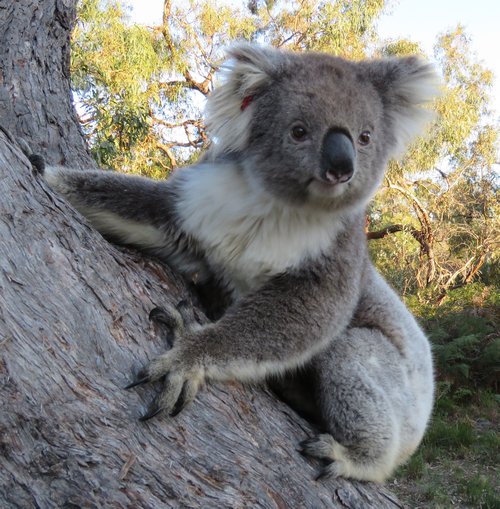Something unique in our back yard
By Richard Appleton
Churchill sits on the edge of one of the core habitat areas for a rather unique animal - the Strzelecki/South Gippsland koala.

It is not a separate species, but the sole survivor of the original wild population that thrived in Victoria prior to European settlement.
By the 1930s, koalas had virtually disappeared from Victoria due to land clearing, fires and hunting for pelts. In an effort to preserve some of their numbers, a few animals were captured and released on French Island and Phillip Island where they bred so successfully that they began over-browsing the limited habitat available to them. A success story in one sense, perhaps, but due to the original introductions consisting of as few as six animals, these koalas were quite in-bred, or in scientific terms the population had very low genetic diversity.
Low genetic diversity can have long-term detrimental impacts on the survival of a species. The more diverse the gene pool, the better chance it has of adapting to the impacts of disease and the stresses of climate change.
All koala populations throughout Victoria, with the exception of the Strzelecki Ranges and South Gippsland, are now descendants of the French Island and Phillip Island koalas, which were eventually transferred back to the mainland to repopulate areas where koalas had disappeared and to alleviate overcrowding on the islands.
Somehow, a viable population of wild koalas survived in the Strzelecki Ranges and nowhere else in Victoria. It has long been thought that we have an intact and diverse gene pool here and some brilliant research over recent years has confirmed that to be the case. Monash University Gippsland and now Federation University, have been at the forefront of this research and Fed Uni continues to facilitate cooperative management and ongoing research into what is now widely recognized throughout Australia as one of the most, if not the most, important populations for the long-term survival of the species nationally. The ongoing decline of koalas in New South Wales and Queensland, combined with the devastating impact of the 2019 fires through much of their range, has only contributed to this importance and the urgency to look after our special animals.
Apart from genetic research, a lot has been going on in the background including habitat mapping, population monitoring, regulatory controls, habitat and wildlife corridor restoration, health and disease studies and more, conducted by a wide range of organizations including State Government, Councils, HVP Plantations, Friends of the Earth, Friends of the Gippsland Bush, wildlife carers, various tertiary institutions, Landcare, friends groups and many others.
The Jeeralang core area is one of two in the Strzelecki Ranges that supports a concentration of koalas because its two most preferred food species, mountain grey gum and blue gum, are abundant. This core extends approximately from Yinnar South in the west to Traralgon Creek in the east and includes Morwell National Park. Koalas also like the endangered Strzelecki gum which is present along some creeks around Churchill.

We can all help to look after these unique animals in various ways, even if we live in an urban area:
- Watch out for koalas on roads, especially late at night when they typically move around.
- If you find a sick, injured or orphaned koala, contact a local rescuer/carer such as Jumbuk Wildlife Care and Rescue (0409 346714) or get help through wildlifevictoria.org.au (03 8400 7300) or wildlifevic.gov.au (136 186). If an orphaned joey is smaller than a football, it will need help to survive. Do not try to handle injured koalas yourself.
- Keep dogs on leads or under close supervision whilst walking them in areas with any native habitat.
- If you have property, you can contribute to koala habitat and welfare by planting their preferred local food species in windbreaks and along creeks, fencing off bush areas to keep cattle out (cows will attack koalas), keeping bush free of weeds like blackberries and not using barbed wire on fences.


